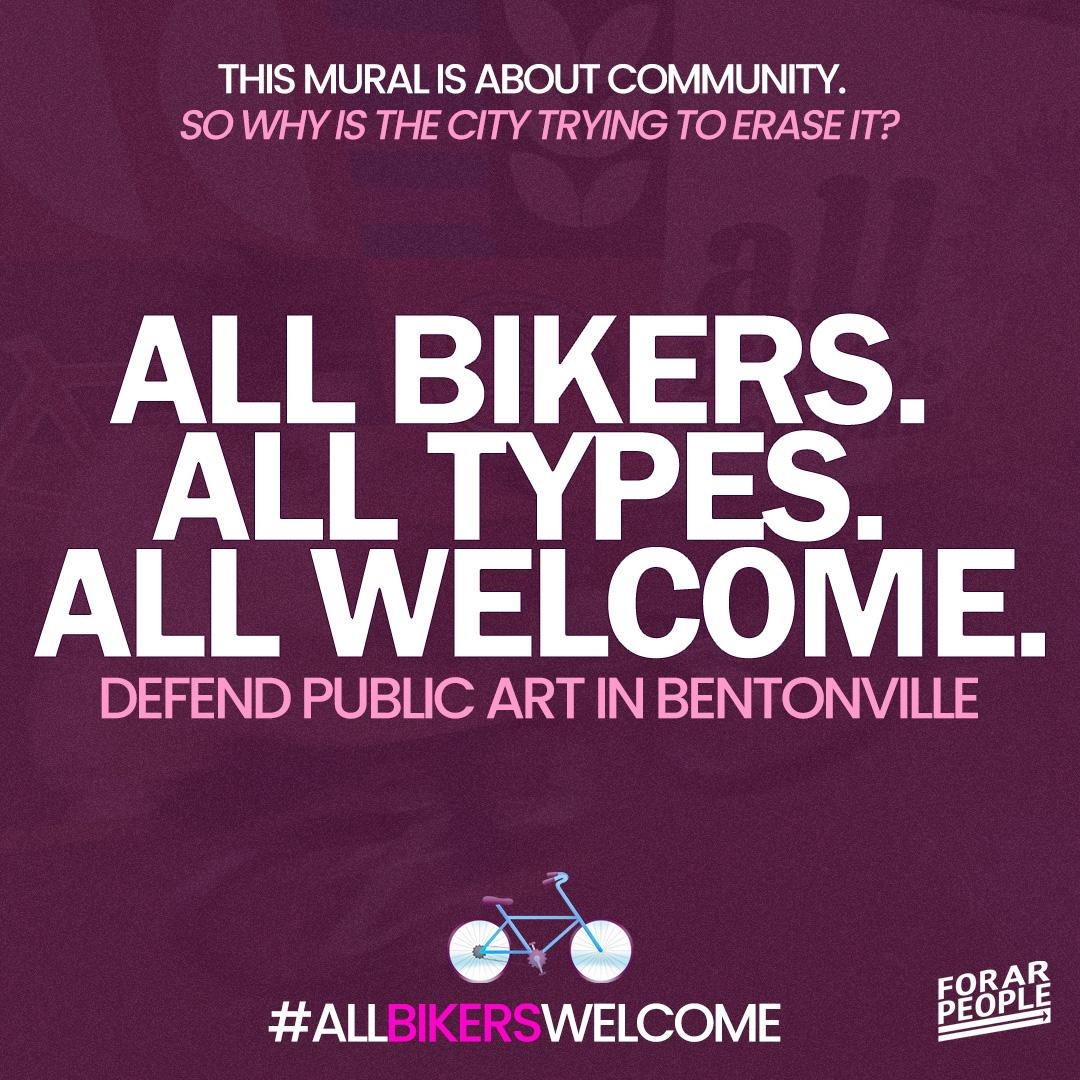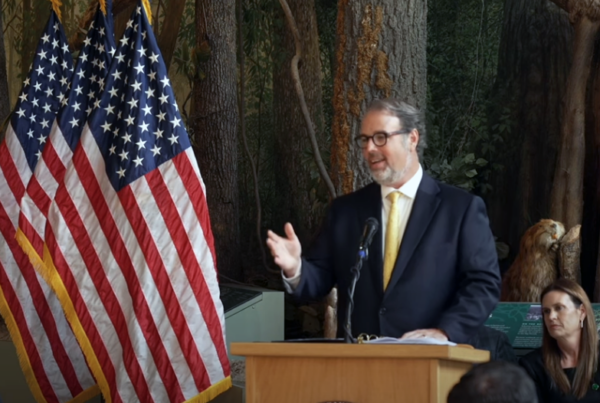When a city tries to quietly erase approved public art, the cycling community fights back
Bentonville, Arkansas has built a reputation as a popular mountain biking destination and made significant strides in increasing biking infrastructure. It’s been a lucrative choice; biking conventions and races often choose Bentonville as the host city. “All Bike(r)s Welcome,” says the city.
Unless, of course, a city council member takes offense at an artist’s choice of colors for a public mural.
The Mural Under Attack
The “All Bike(r)s Welcome” mural wasn’t rogue street art. It went through the proper channels: city approval, secure funding, and community celebration. The artwork embodied Bentonville’s cycling culture and commitment to welcoming all riders to the extensive trails and passionate cycling community.
Then something changed. Without public debate or due process, city officials – seemingly driven by councilmember Beckie Seba – decided they wanted the mural gone. According to advocates fighting to save it, the push to erase the artwork came after Seba objected to the colors, which reportedly called to mind a trans pride flag.
No vote was taken. No precedent was followed. Just a quiet attempt to paint over art that had already been embraced by the community.
When Censorship Looks Like City Hall
This isn’t just about one mural—it’s about how public art gets made and unmade in American cities. When officials can approve, fund, and celebrate an artwork only to quietly kill it later, it raises serious questions about artistic freedom and transparent governance.
The “All Bike(r)s Welcome” controversy represents exactly the kind of violation of trust that public arts advocates worry about, especially when cuts at the federal level have drastically limited expression. Public art exists in a delicate space between community expression and municipal authority. When that balance tips toward censorship, especially without clear process or public input, it sets a dangerous precedent.
A Community Responds
The cycling and arts communities in Bentonville aren’t taking this quietly. Advocates are mobilizing to flood city council meetings with support for the mural, pressure Mayor Orman to intervene, and turn this local controversy into a national example of community-led arts advocacy.
Their message is clear: if Bentonville loves bikes, it should embrace all bikers. The city can’t celebrate public art and then erase it because one councilmember decides she doesn’t like the color. When officials make decisions about community spaces – especially popular ones – they should do so transparently.
The “All Bike(r)s Welcome” mural represented the same values that made Bentonville a popular biking destination. It’s a public declaration that this city’s trails and culture are open to everyone.
When city officials try to quietly erase that message, they’re not just removing paint from a wall. They’re sending a signal about what kind of community Bentonville wants to be.
What Happens Next
The fight to save the mural is about more than one piece of public art. It’s about establishing that communities have a voice in decisions about their shared spaces. It’s about ensuring that public art can exist without fear of arbitrary removal. And it’s about holding city governments accountable when they try to govern by closed-door decisions rather than transparency.
For Bentonville, this moment offers a choice: embrace the inclusive, creative spirit that helped build its reputation, or let fear and politics paint over the very values that made the city special in the first place.
The cycling community is watching. The arts community is watching. And they’re not staying silent. The next city council meeting is on Tuesday, June 10.
#AllBikersWelcome





